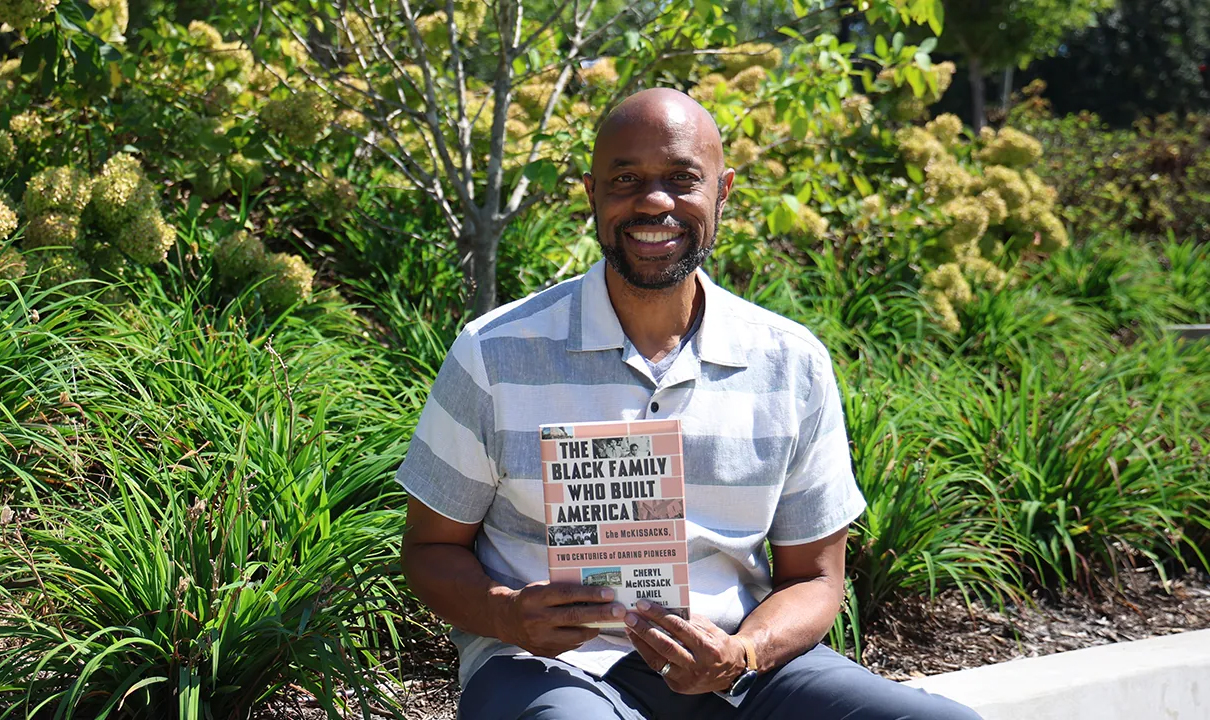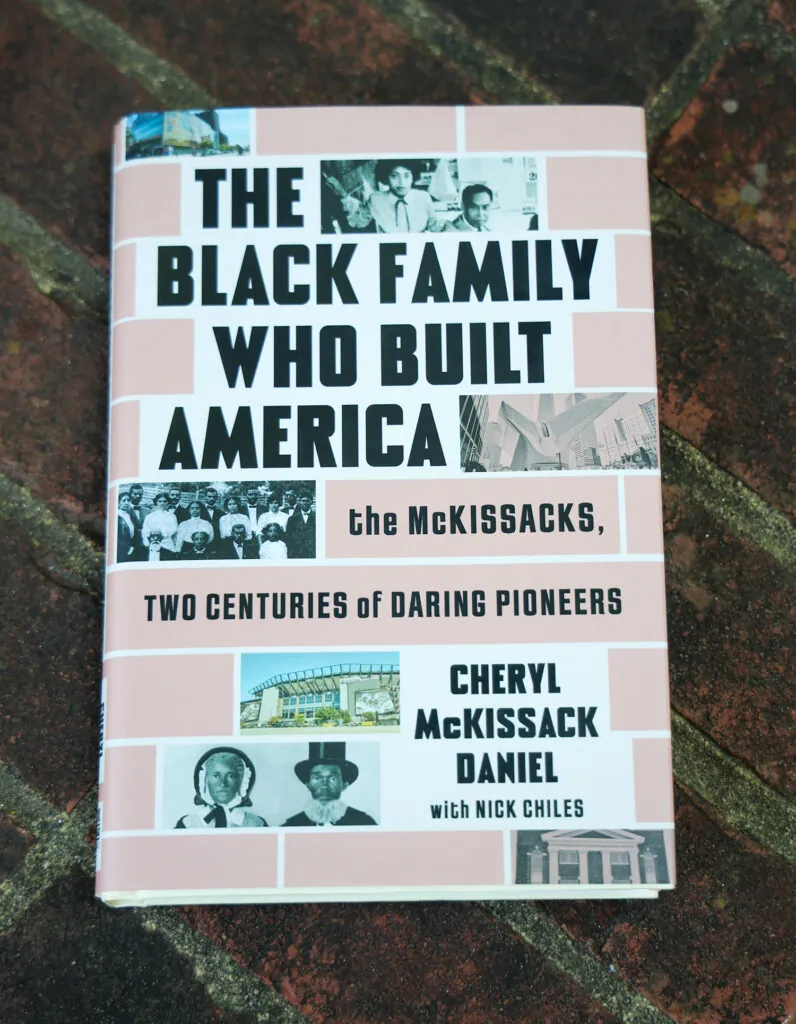Nick Chiles co-authors “The Black Family Who Built America”
Nick Chiles co-authors “The Black Family Who Built America”

Originally posted by the Grady College of Journalism, written by Sarah Freeman
Nick Chiles (Low-Residency MFA in Narrative Nonfiction, ’22) practices what he teaches.
The clinical assistant professor not only teaches feature writing at Grady College but he writes books —23 of them to date—during the summer and winter breaks when he is not teaching.
Chiles’ newest book, “The Black Family Who Built America: The McKissacks, Two Centuries of Daring Pioneers,” was published in August and tells the story of his co-author, Cheryl McKissack Daniel, and generations of her family.
“This feels like an artifact for a kind of historical record that people will be referring to hopefully 50 and 100 years from now,” Chiles proudly says of his latest book.
Chiles admits to not previously knowing much about the McKissacks but now equates their impact to the American landscape to that of the Vanderbilts and Morgans. He said the McKissacks likely did not gain as much notoriety since they were an African-American owned business.
“I was blown away because I had never really heard of the McKissacks,” Chiles admits. “But then I started realizing how often I would see that name on construction signs. I think that the McKissack name should be up there amongst important families who were very crucial to the development and the building of America.”

The McKissack family’s impact on America dates back to the late 18th century when 11-year-old Moses McKissack arrived from Ghana and was enslaved to a builder in North Carolina. The builder taught Moses the trade, who passed it down to his son, Moses II. After emancipation, Moses II started his own construction company during Reconstruction that has grown over the decades since. The co-author of the book, Cheryl, is the fifth generation McKissack to serve as CEO and president of McKissack, the oldest minority/women-owned professional design and construction firm in the United States. With more than 6,000 projects over a century and a half, McKissack helped build the Barclays Center in Brooklyn, the John F. Kennedy International Airport, Lincoln Financial Field in Philadelphia, thousands of churches, and numerous HBCU campuses, among other projects.
Chiles first became aware of the McKissack’s story four years ago when one of her assistants reached out to see if the history was promising content for a book. Chiles immediately thought it was an amazing story that the world needed to know. Shortly after, Cheryl was interviewed by Charlamagne tha God on his popular radio show, The Breakfast Club. Charlamagne has his own publishing imprint called Black Privilege Publishing at Simon & Schuster and when he heard the family was already talking with Chiles, the project accelerated.
“I feel even more emotionally invested in this story than usual because I’ve been involved from inception to fruition,” Chiles says.
“The Black Family Who Built America” is a deeply researched book, and Chiles spent many hours in the UGA library, a resource he found extremely helpful.
“If I had to do this kind of outside of a university, it would have been a lot harder,” said Chiles, who accomplished about 90% of his research through the libraries’ own collection and transfers from other locations.
Chiles has also written books with Bobby Brown, the Rev. Al Sharpton, Jamie Foxx, and an upcoming book with Colin Kaepernick, among others. He earned a Pulitzer Prize in 1992 as part of a New York Newsday team.
Connecting his books with the classroom
Chiles is always looking for ways to connect his experiences writing with teaching in the classroom. He explains that many of his students understand chasing down news and writing in the inverted pyramid style, but he likes to take a step back and talk with his students about how to entertain the reader.
“The publishing process is about entertaining the public and getting the public to be interested in wanting to read something and buy it and put their money down,” Chiles says.
As an example, he looks to his author interviews with the actor and comedian Jamie Foxx. Chiles had hours of video recordings during his interviews where Foxx would act out the stories he was telling. There are times in class where Chiles will show his students a video, then have them read the passage he wrote so the students can visualize the transition of the interview to the printed page.
“It’s all about storytelling and that’s what I’m trying to get kids in this building to focus on,” concludes Chiles.
Author: Sarah Freeman, freemans@uga.edu
